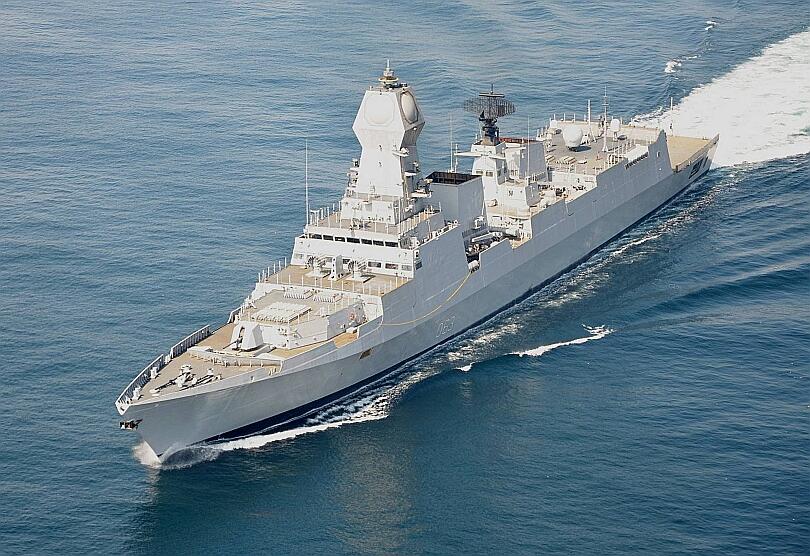INS Kolkata D63 during commissioning trials.
The Indian Navy has sent out a RFI for an Anti Missile Decoy system that would give warships 360-deg in azimuth protection against anti-shipping missiles.
The system would comprise of one or more of the following elements
(a) Chaff dipoles dispenser.
(b) Active Off-board Decoy.
(c) Inflatable Floating (waterborne) Decoy with corner reflectors.
(d) IR Decoy
The decoy is intended for fitment on warships of various sizes as follows
(i) Missile Boats 200 T
(ii) Missile Corvettes 1,500 T
(iii) Patrol vessels and Frigates 3,000 T
(iv) Destroyers 6000 T
(v) Fleet Tankers / Support Ships 20,000 T
(vi) Aircraft Carriers 50,000 T
The decoy should be capable of being deployed in the following modes:
(a) Confusion Mode – Deployment of the decoy prior launch of the missile by hostile force.
(b) Distraction Mode – Deployment of the decoy prior commencement of transmission by the inbound missile radar seeker.
(c) Seduction Mode – Deployment of the decoy after commencement of transmission by the inbound missile radar seeker
Besides other details, vendors have been asked to specify the 'Bloom Time' of the system and the probability of success.
Bloom Time or activation time is the time between launch of the decoy from operating platform and activation of decoy at the designated position post launch.
The Fire Control System (FCS) for the decoy system should be capable of
(a) Accepting requisite input data both manually (fed by operator) and automatically (based on data being provided from ship sensors in a standard format).
(b) Computing mission parameters for accurate deployment of decoy(s).
Kavach
DRDO developed Kavach is a ship based decoy system deployed on several Navy ships to counter radar guided antii-shipping missiles by dispensing chaff using rockets, but compared to the system being sought the protection provided by Kavach is very limited in scope.
The 'Kavach' system releases chaff made of silver coated glass fiber. Suspended in the air. The radar reflecting chaff presents an incoming guided threat an alternative target with stronger radar signature than the ship, confusing the missile and causing it veer off the target towards the chaff.
The chaff dispensing rockets used by the Kavach system are made at Ammunition Factory Khadki (AFK).
AFK has developed three versions of Kavach chaff dispensing decoy rockets with ranges of 12 km (long range); 5 km (medium range) and 1 km (short range) chaff rockets.




